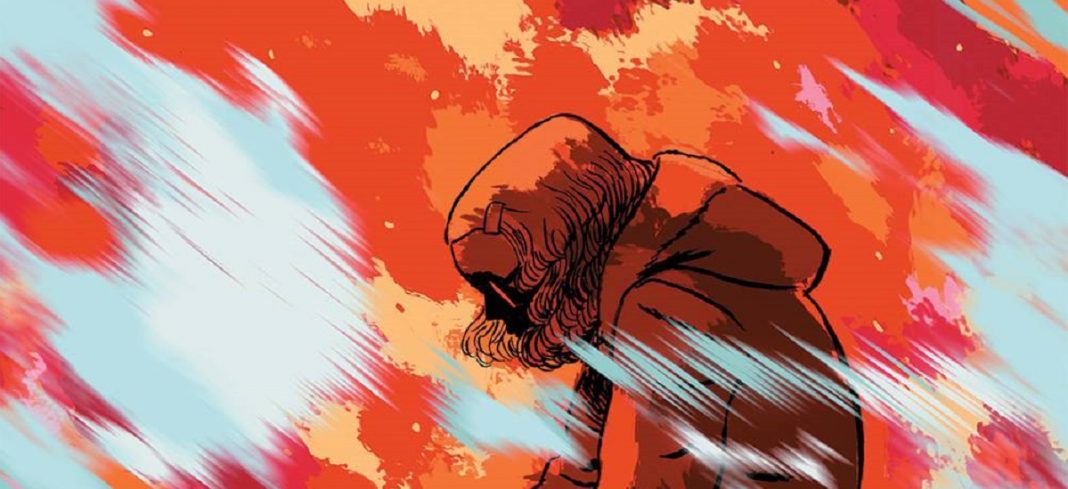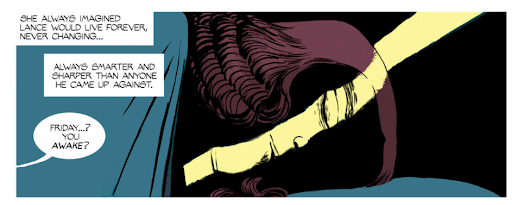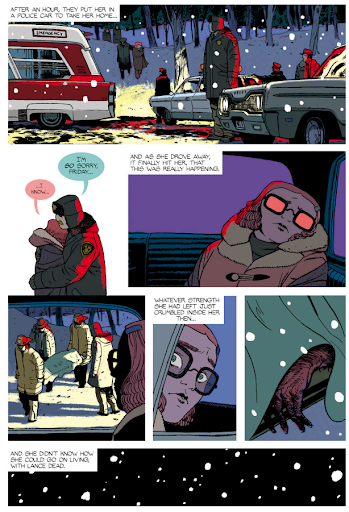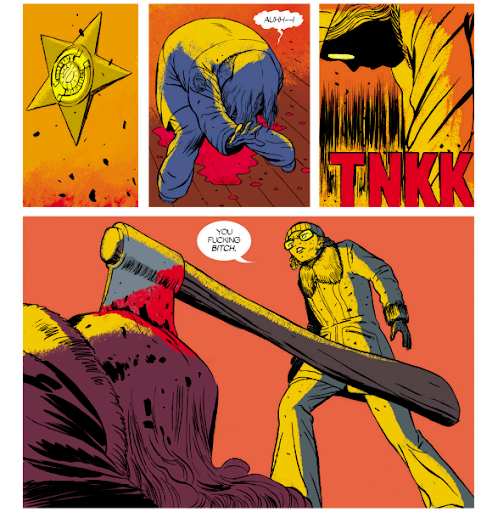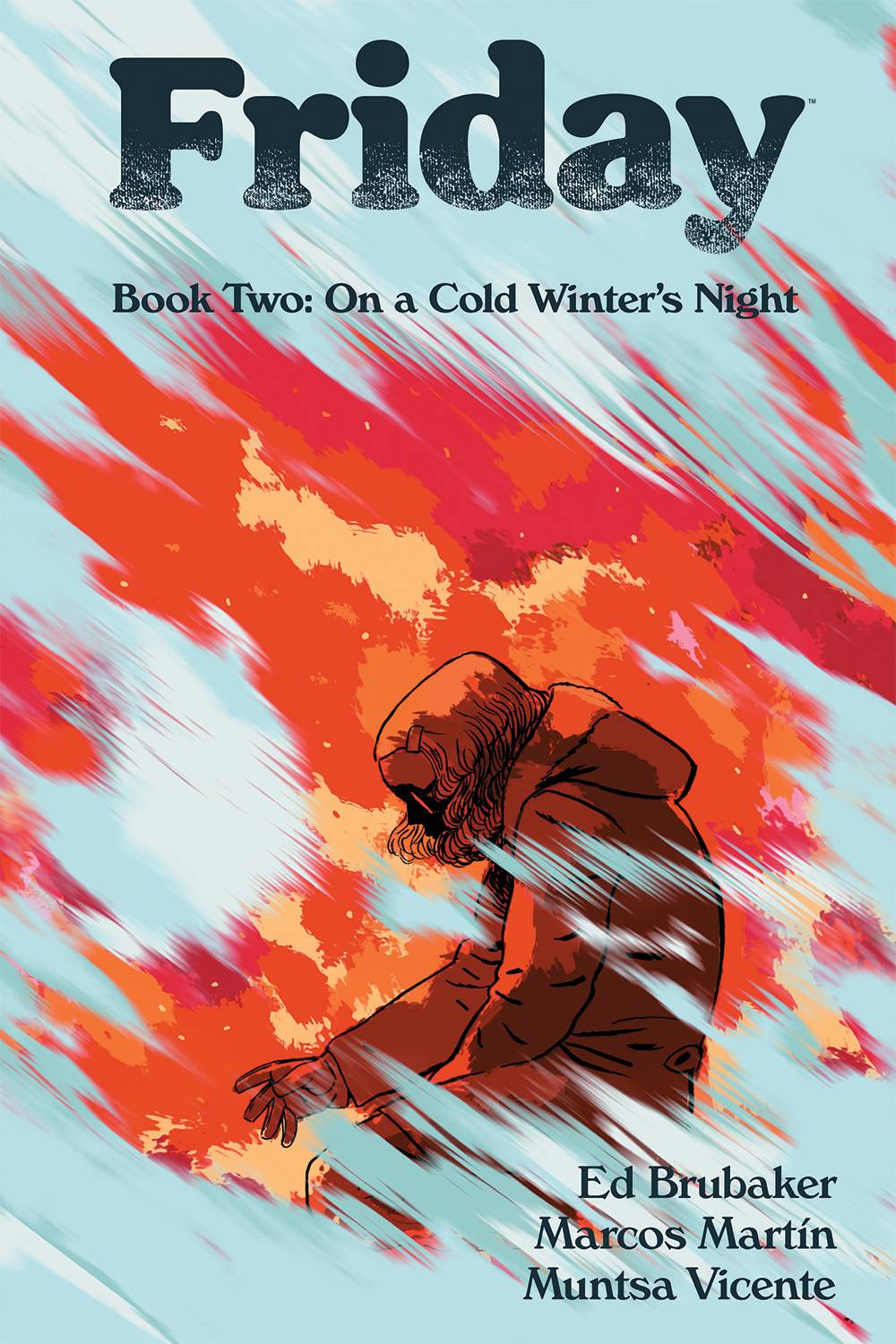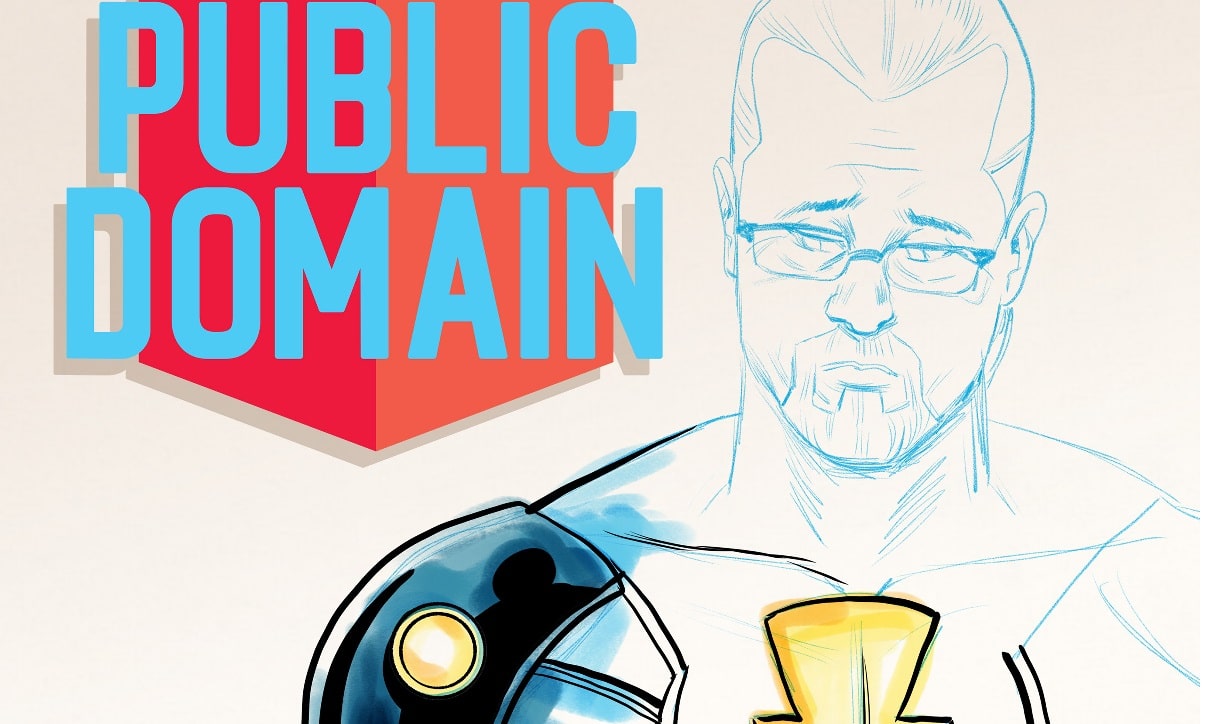When we last left Friday Fitzhugh, her best friend and teen detective, Lancelot Jones was murdered! Her sleepy, New England home town of King’s Hill became ripe with Lovecraftian horror high jinks! And we learned the secret history of Friday and Lance’s… conflicted sexual feelings? Yes, you read that correctly. This last element is what eases us into Ed Brubaker, Marcos Martín and Muntsa Vicente’s idea of a Post-YA series, mixing familiar tropes of teen detectives with the difficult realities of growing up. That potent combination makes for a fun, loving and unique next installment for Friday.
Friday Book Two follows the shocking cliffhanger of the first volume by leaning into the uncomfortable relationship we have with fiction that never ages. The books we read as children will last forever. The heroes in them are immortal, impervious to aging, physical harm and change. As we grow older, we seek the comfort of fiction’s immortality, just as the people who we thought would never die reveal themselves as all too mortal. It’s a scary thought, but it’s part of growing up, which is also why it’s absent in most young adult detective novels. The Hardy Boys and Nancy Drew will always be teenagers, and we’ll just keep getting older.
The series is emotionally anchored in that first hometown holiday, after you’ve experienced the world for the first time and everything that used to be familiar feels off. There’s a conflicting nostalgic overtone to the story that’s running up against a subtle horror, both rooted in the nature of immortal fictions. There’s something loving about a home that never changes, that’s small and cozy and anchors us after we go out into the real world. But once we have those experiences, that small town consistency can feel like a prison, confined to a place that no longer conforms to who you might become. Brubaker tows this line with elegance, and the stylistic choices made by Martín and Vicente bring that emotional conflict front and center.
Friday’s grief parallels this journey for the Post-YA reader, as her relationship with Lance is one made more and more uncomfortable by growing up and seeing her partner as something fixed in time. His loss hangs heavy over issue #4 which is allowed to decompress and live in the world Martín and Vicente have rendered so richly. Friday not only emotionally withdraws from the world, spending her days in bed grieving her lost best friend, but the art isolates her, moving her to corners of panels or showing her so much smaller than the world of characters who feel like they’ll never change, immortally fixed in time the same way she saw Lance.
When the moment finally hits her that Lance is dead, we see that comforting warmth of Sheriff Bixby who symbolizes the ineffectual nature of comfort from a world that never changes in the face of life changing circumstances.
It’s very hard to tell if you can move forward when everything around you is standing still.
Martín’s work here continues a career high streak, depicting Friday as both a distinct, competent detective in her own right, and as a young girl in over her head. While prior issues focused on lavish two-page spreads of snow, old adventures, and the geography of King’s Hill, this volume let’s Martín lose on action sequences that crank up the Lovecraftian horror teased in the first volume. Martín is able to maintain Friday’s confidence, swift motion and familiarity with her home to keep the momentum of the story going, and allowing her to stay a step ahead of her pursuers. But that confidence is tested with monsters and violence thrown on Friday with little warning. Vicente colors the action scenes in yellows and reds that keep up our adrenaline and sell the horror. It’s a welcome contrast to a book that so far focused on snowy forest landscapes, and warm New England interiors.
The final issue of this collection is a change of pace in all the right ways, allowing for fun, horror infused action and narrative twists that capitalize on Brubaker’s themes of immortality, and growing up. Allowing each issue to be flexible in page count leaves room for both Brubaker to flesh out the direction of the series, and for Martín and Vicente to fill this world with life. Sequences that could economically be a single page are made longer to suit the instincts of the art. Rather than putting a drag on the pace, this allows the implied history of Friday and Lance’s prior adventures to feel more real, and the emotional beats to hit harder. There’s an organic feeling to the story structure that lets my mind live in this world freely, unconfirmed. And that comfort is the initial draw of the YA teen detective genre, before transforming into a classic Brubaker pulp noir.
Brubaker is often a meditative writer, who has characters muse about their history and the choices that led up to this moment. He’s at home with somber, quiet sentences, and bitter irony. What has been noteworthy about Friday is that his often nihilist, jaded characterizations are retooled to fit inside this context, and it allows the story to be a loving deconstruction rather than a cynical one. There’s plenty of the existential angst that we’ve come to love from Brubaker, but there’s still fun to be had, and wild concepts to explore. While Brubaker isn’t new to infusing mysteries with horror elements, like in the case of The Fade Out, the concepts here feel fresh when paired with the YA novel setup. Modern young adult fiction has taken a noticeably supernatural turn, whether in the form of The Chilling Adventures of Sabrina, Stranger Things, or the recently released Wednesday. Brubaker is playing in that space, and opens this comic up to fans of those franchises, but he never loses what makes his writing special, or what was different about growing up with teen detectives.
That said, the one thing that does feel missing here is Brubaker’s love of books as art objects. While there is plenty of extra material courtesy of the Panel Syndicate releases, the size of these paperbacks are a strange choice. They’re too tall and thin to be manga Tankōbons. They’re too short and thick to be magazine style. There’s just no good way to display these without the book disappearing behind larger editions. And given the incredible artwork, it’s a shame that the print pages don’t do justice to the richly detailed aesthetic of the book. In order to refresh myself on the story, I read the first volume before diving into this, and instead of pulling out my paperback of Vol 1, I opted to read the digital copies on my laptop because the onscreen display was larger, and richer in color. I’m not a digital comics person, so that personal choice felt like an unfortunate compromise. I love Brubaker’s attention to detail on physical media releases, and I hope there’s eventually a re-release of the complete series in a larger format. I’ll gladly double dip for a book that looks better on my shelf.
Overall, Friday Book Two is everything I loved about the first volume, dialed up to eleven. The action, pace, and sincere character work open up a unique narrative space for Brubaker, Martín, and Vicente. The book dances around a simultaneous familiar genre trapping and a distinct deconstructive approach to young adult stories. Friday Book Two is a great companion this holiday season.
TRADE RATING: Friday Book Two – On A Cold Winter’s Night
Friday Book Two – On A Cold Winter’s Night
Writer: Ed Brubaker
Artist: Marcos Martín
Colorist: Muntsa Vicente
Publisher: Image Comics
Price: $15.99
Publication Date: December 14, 2022
Read more trade collection reviews every Thursday in our Trade Rating column!


